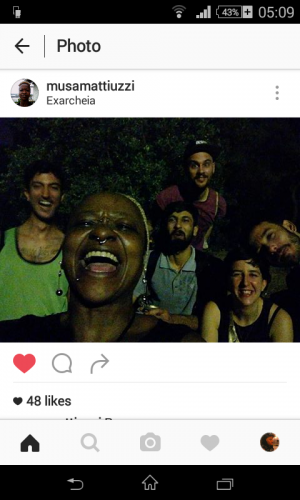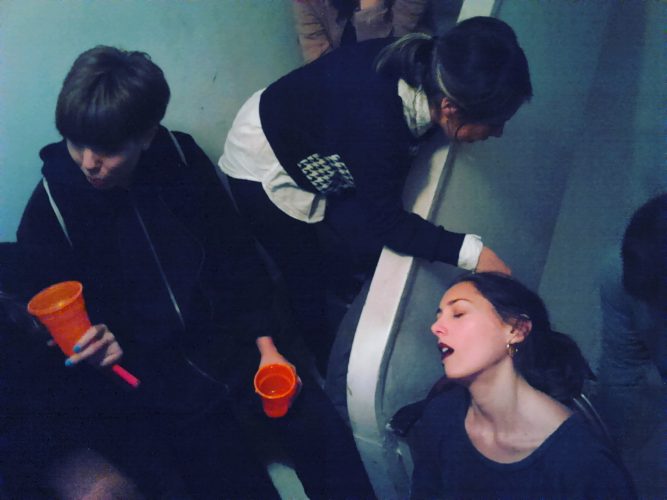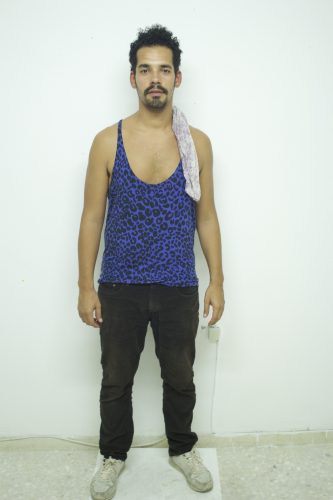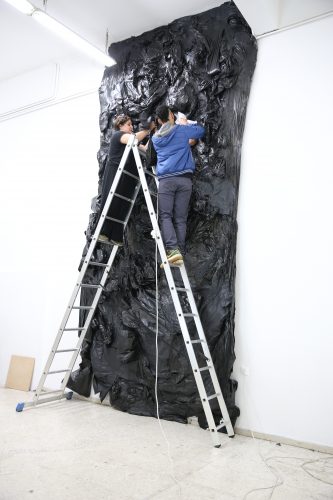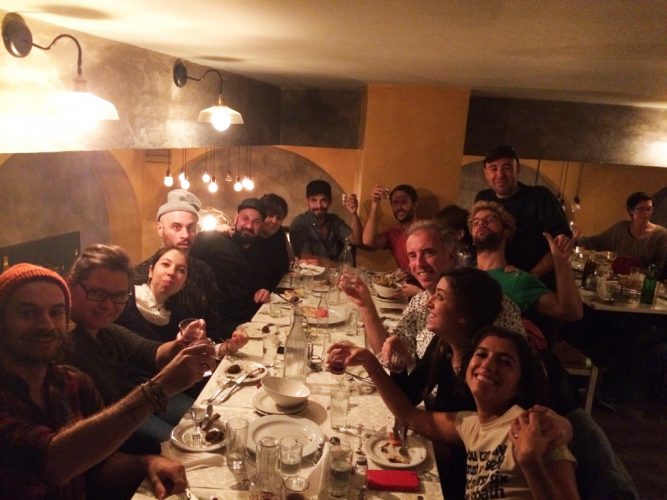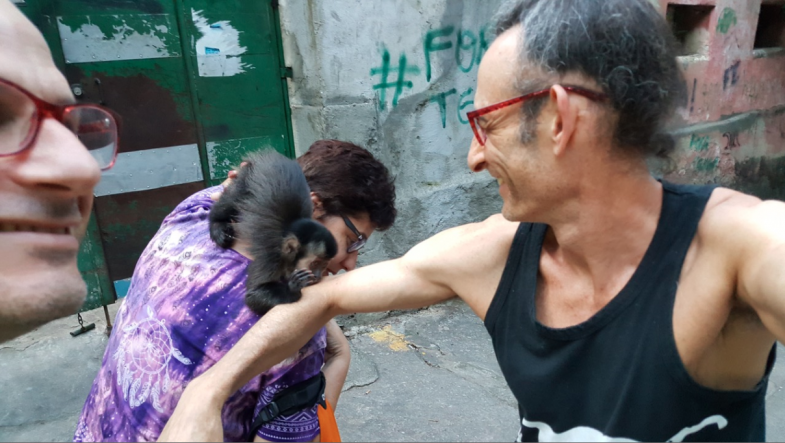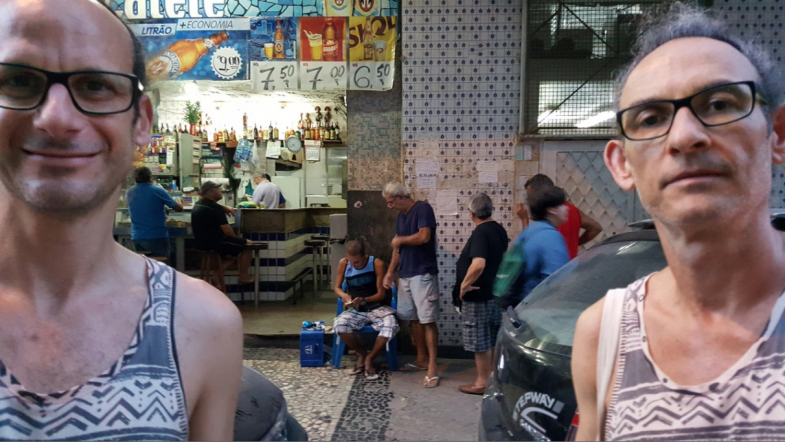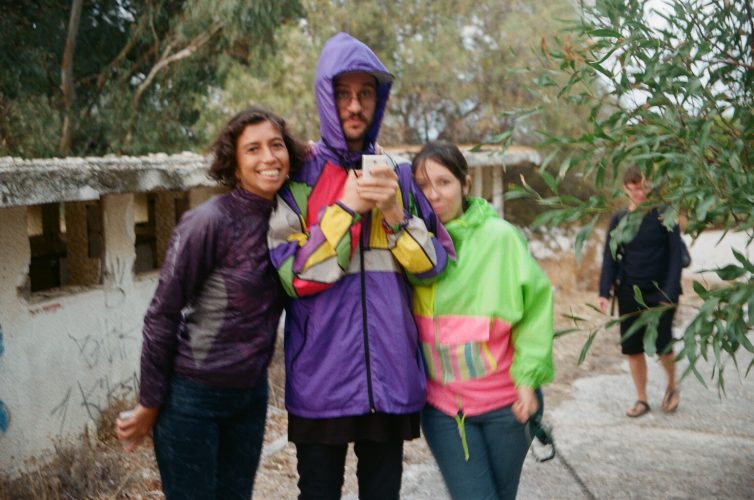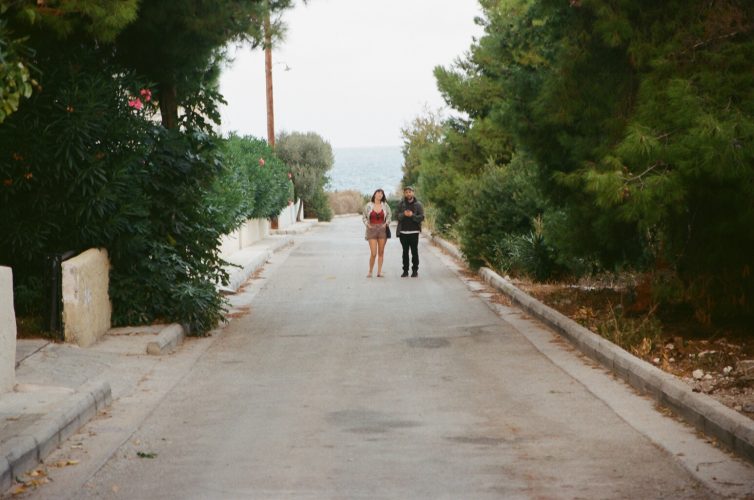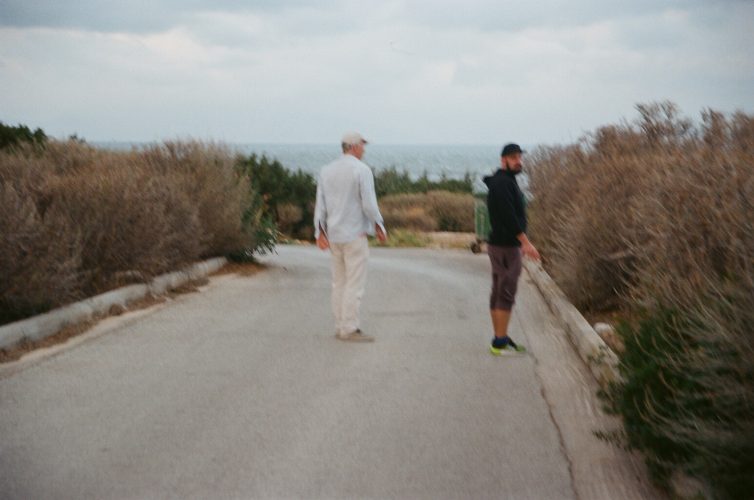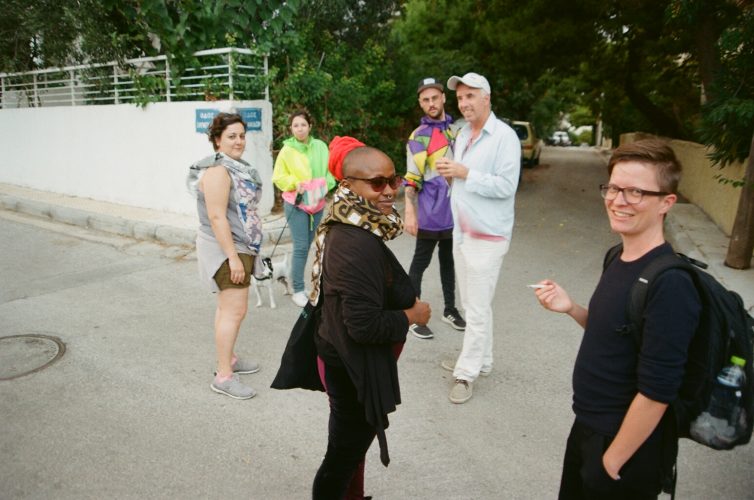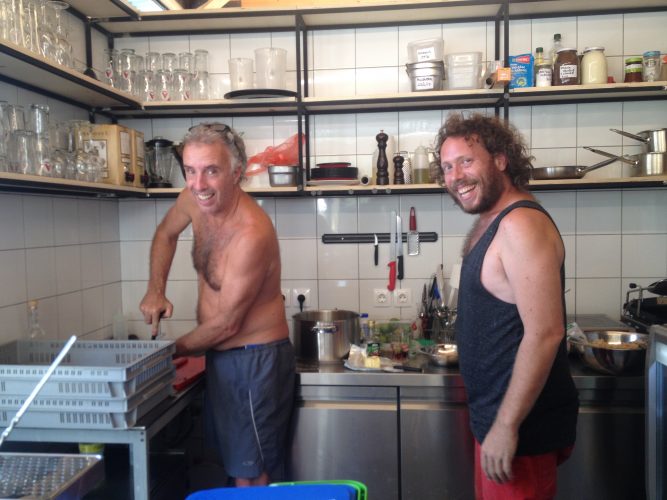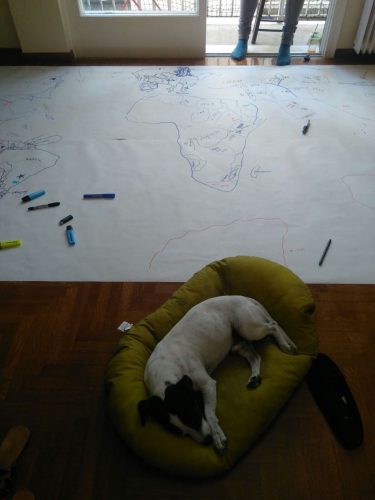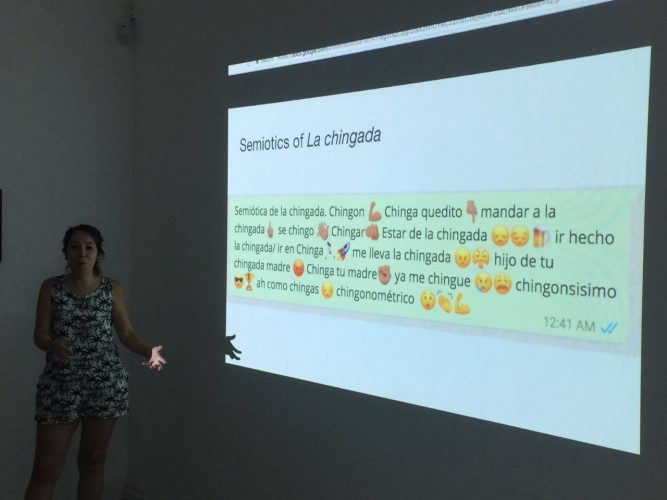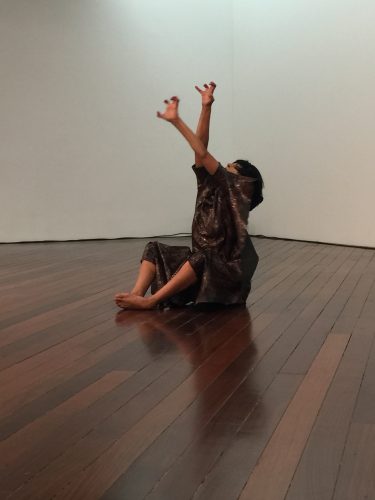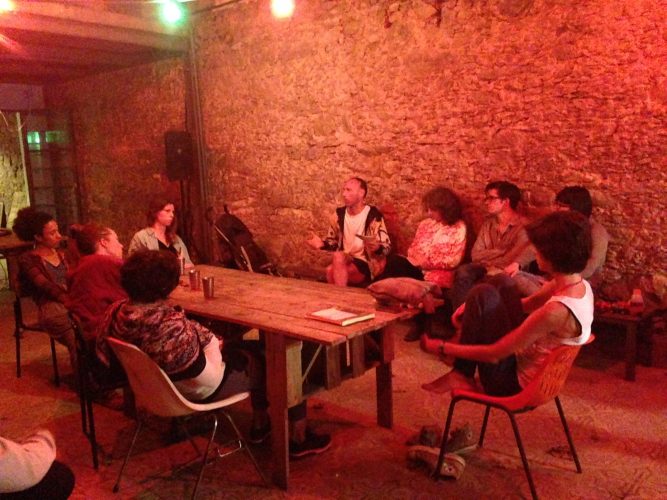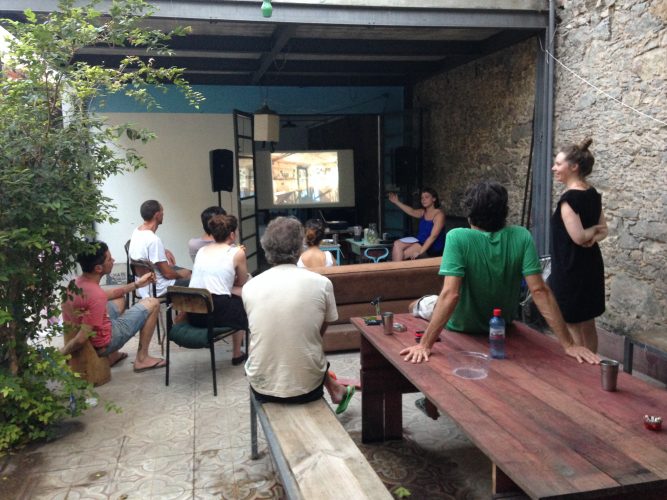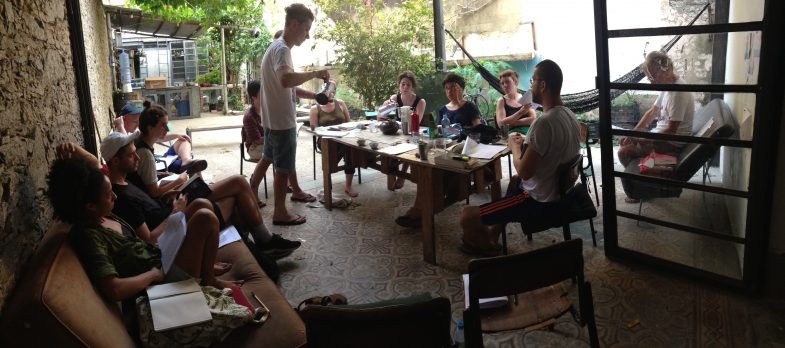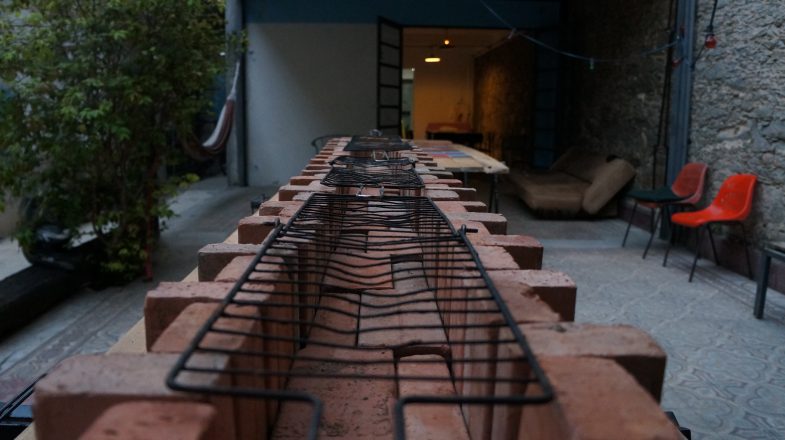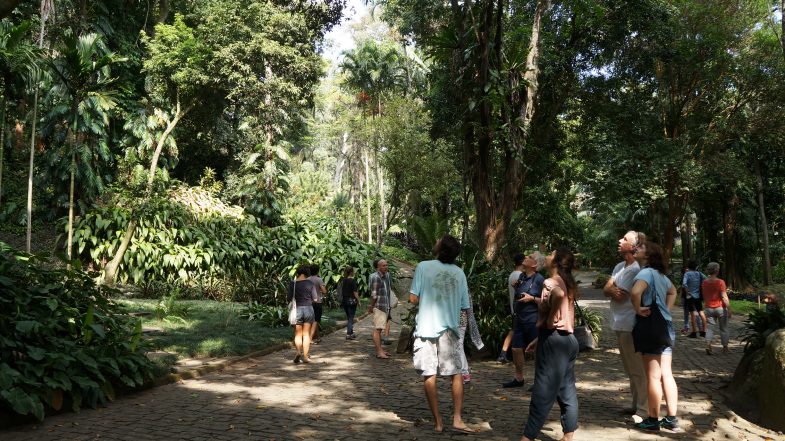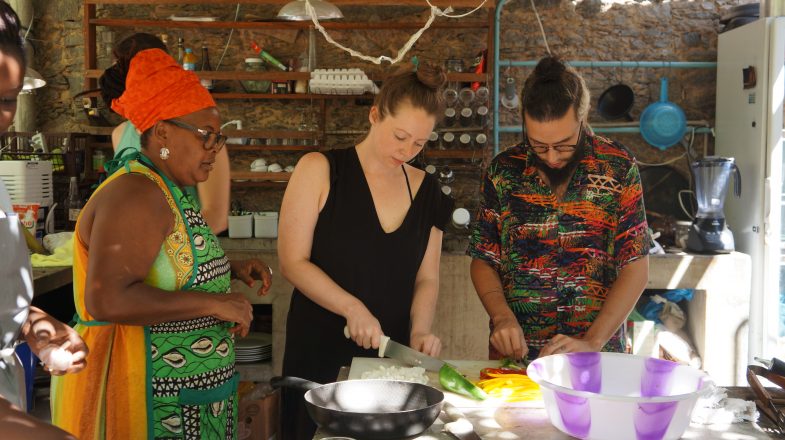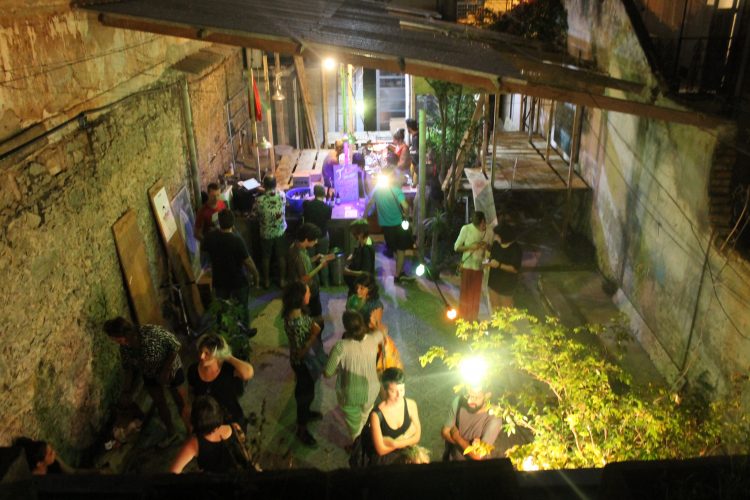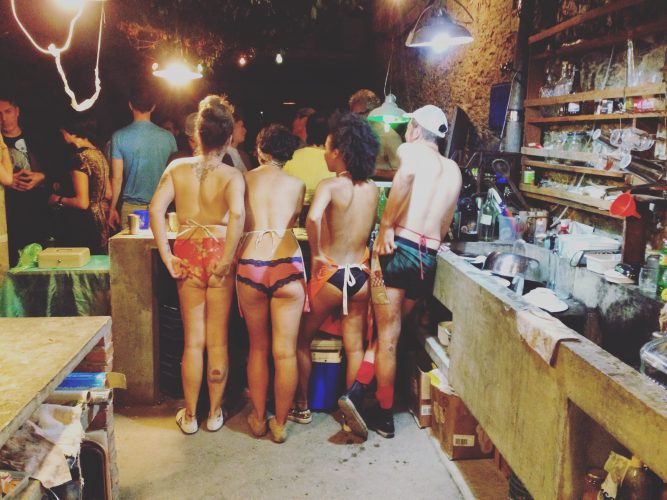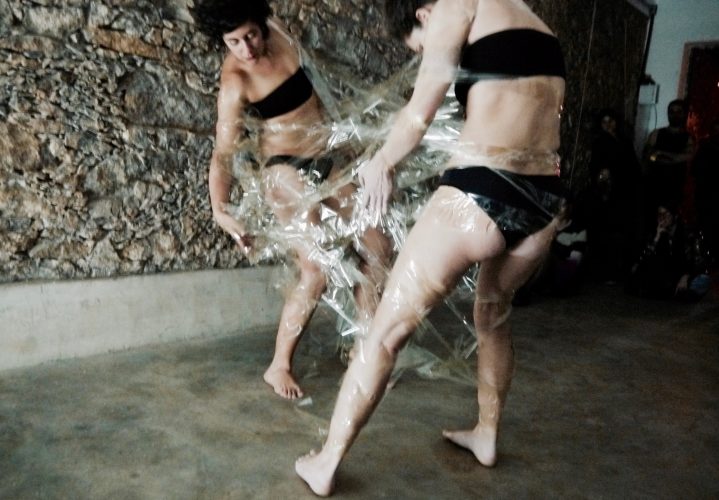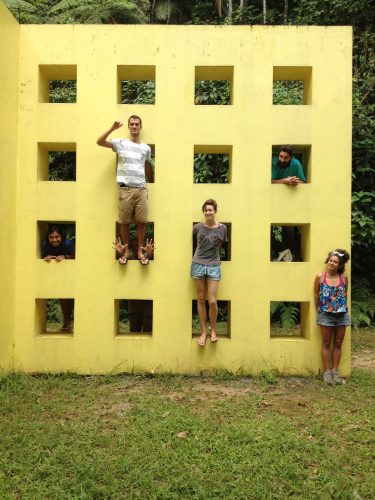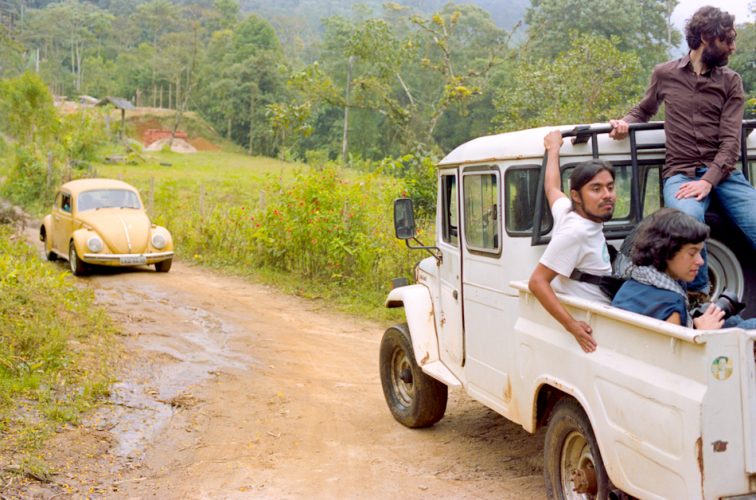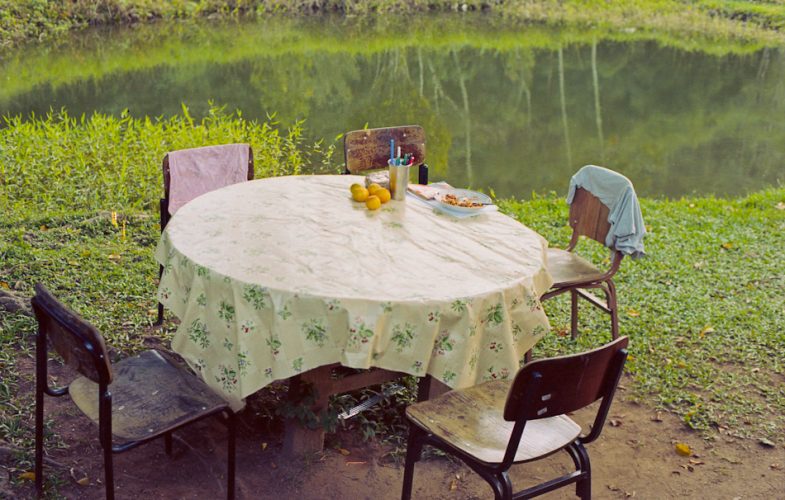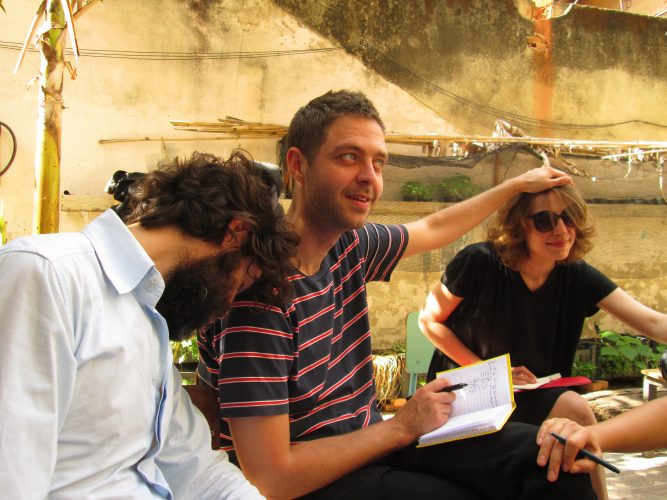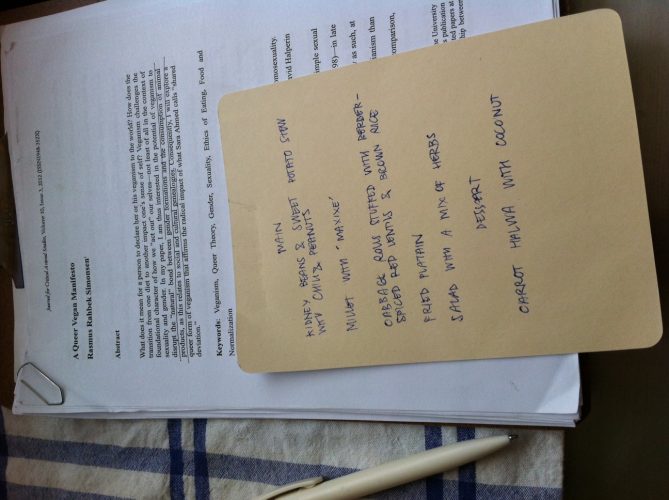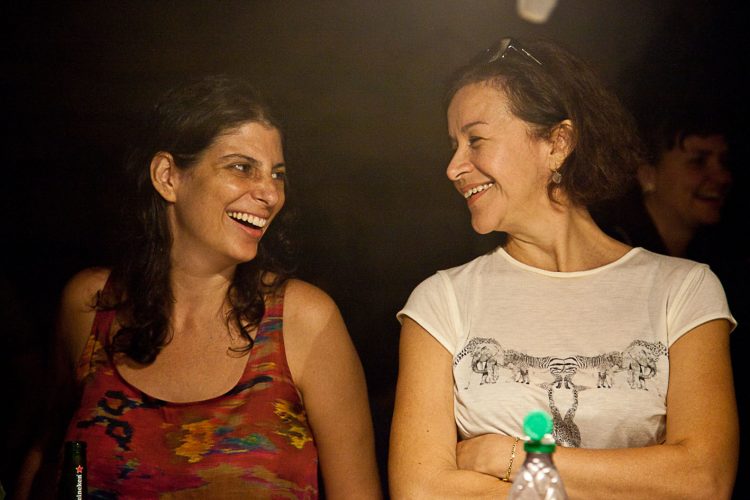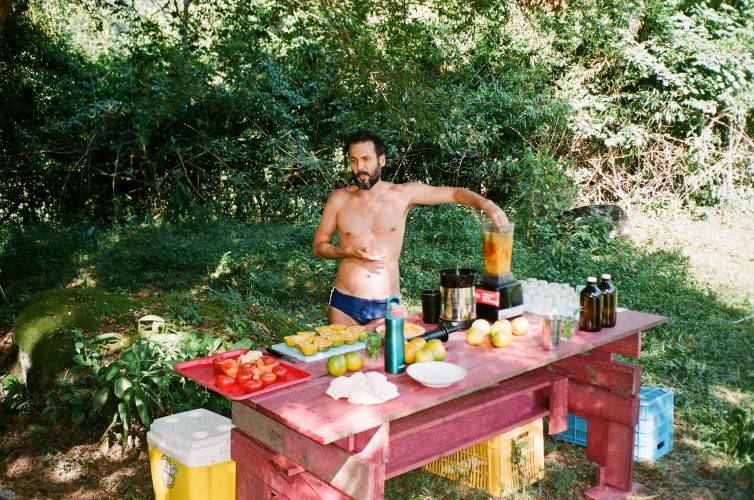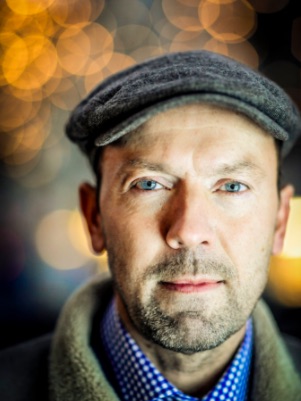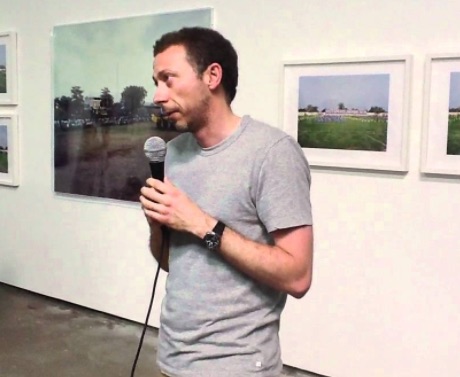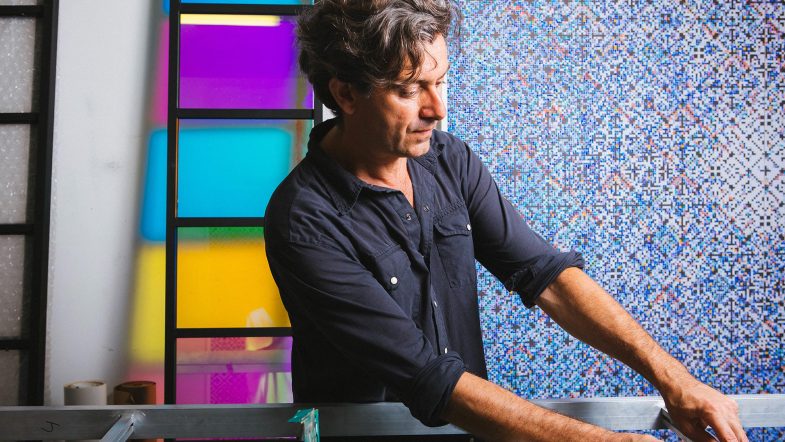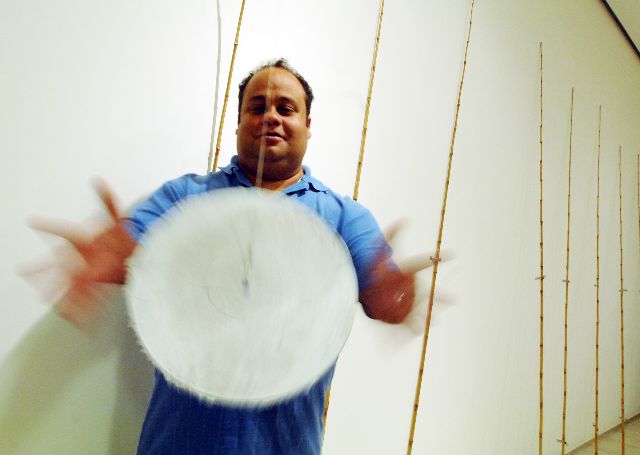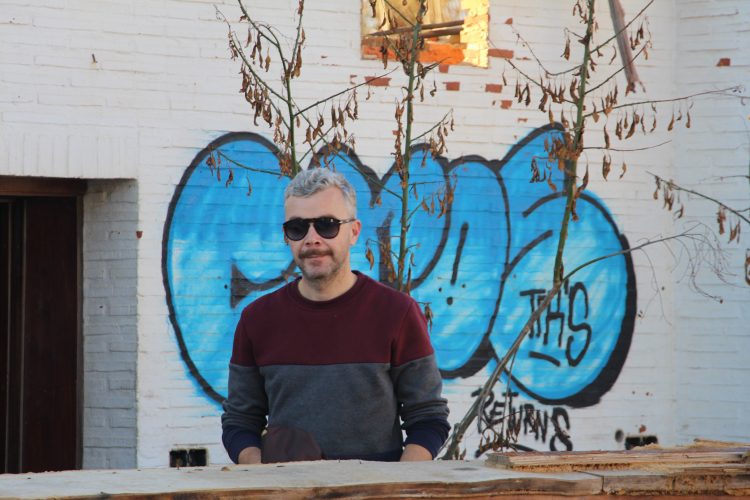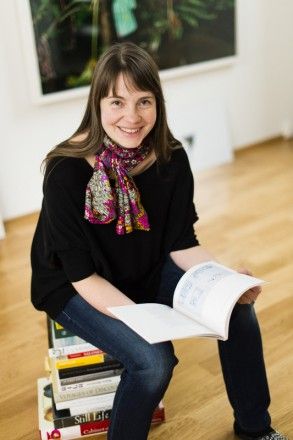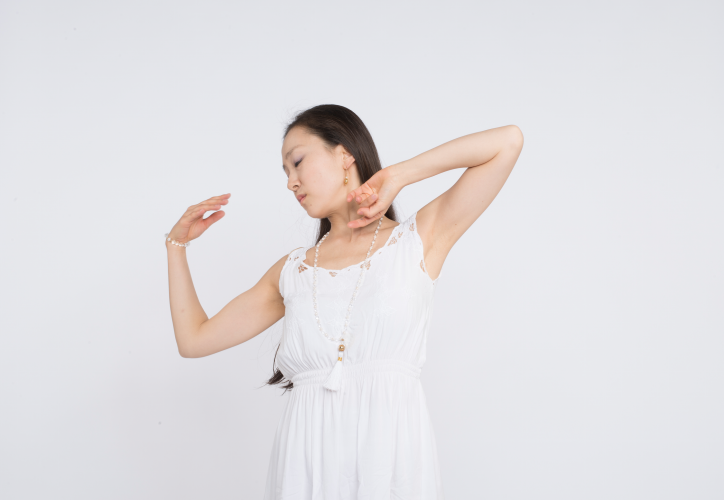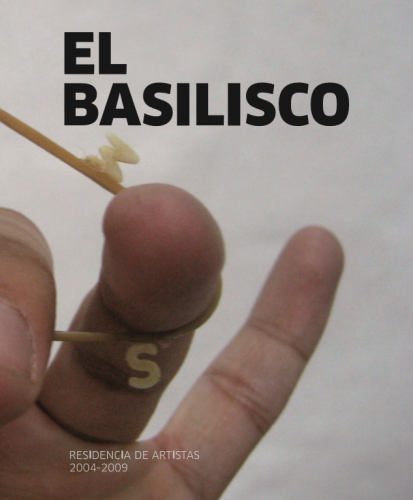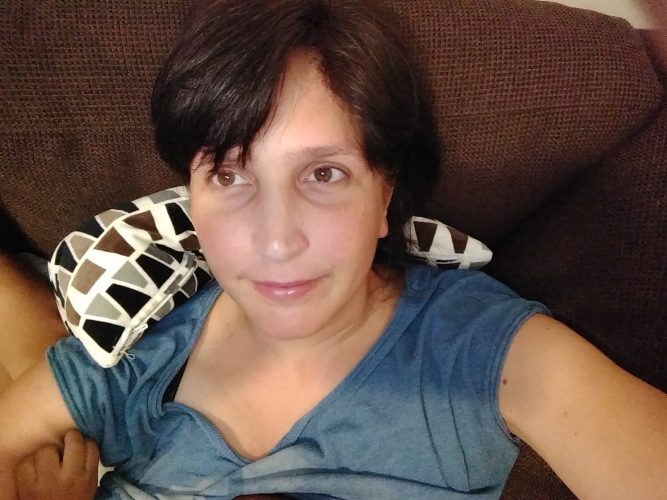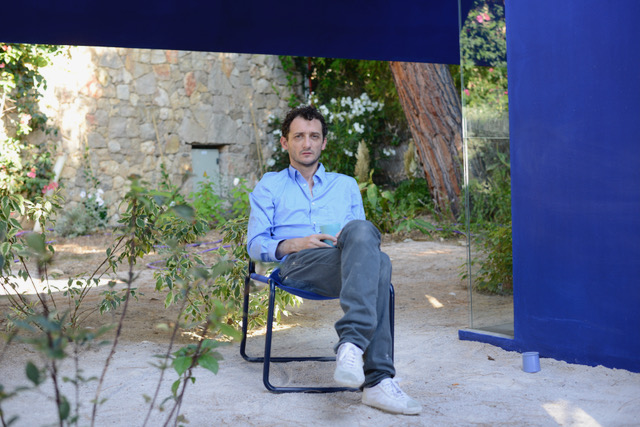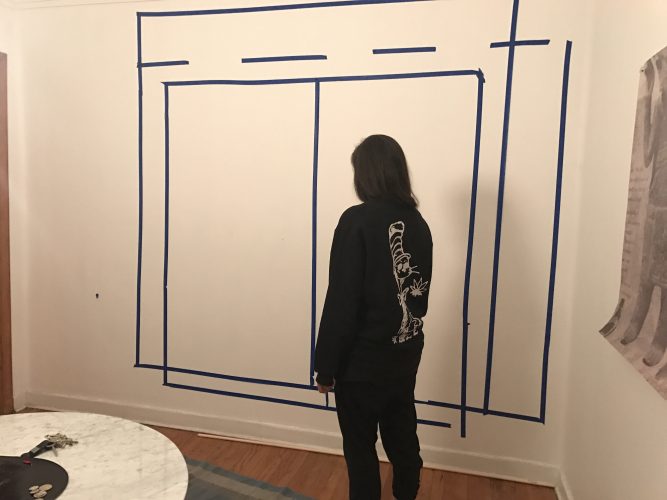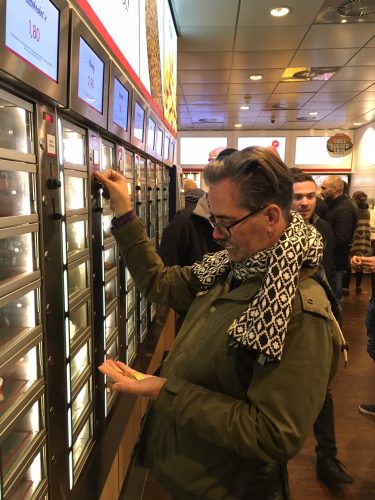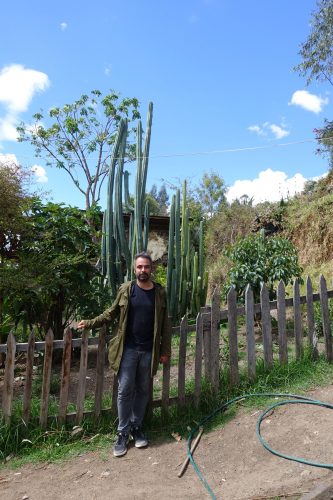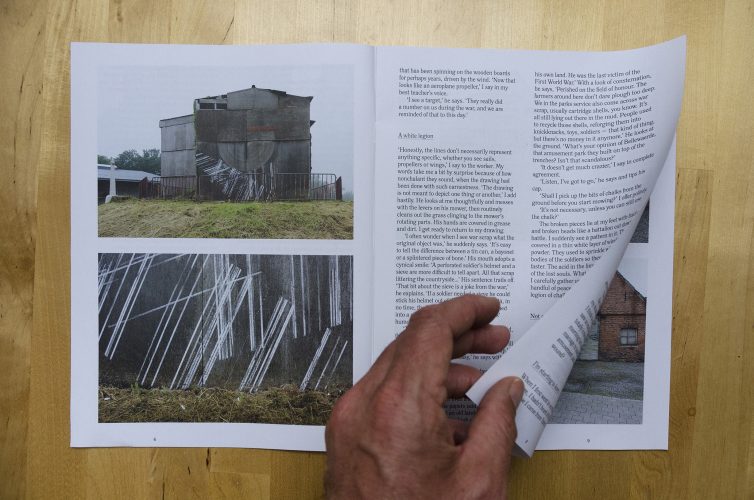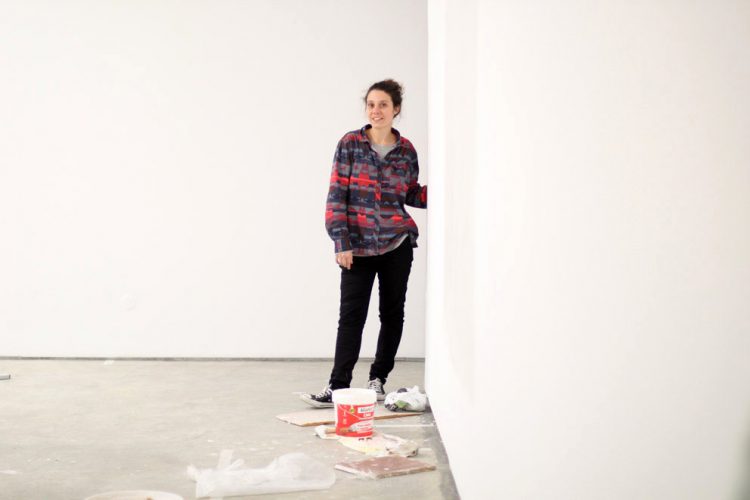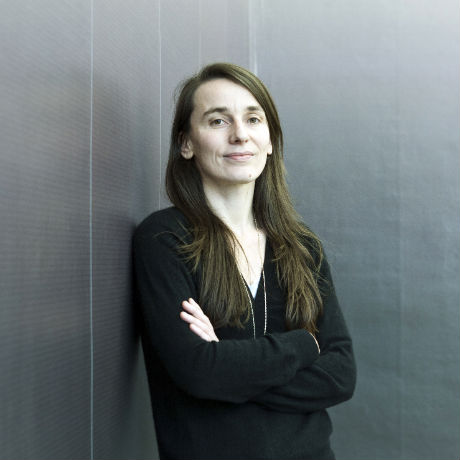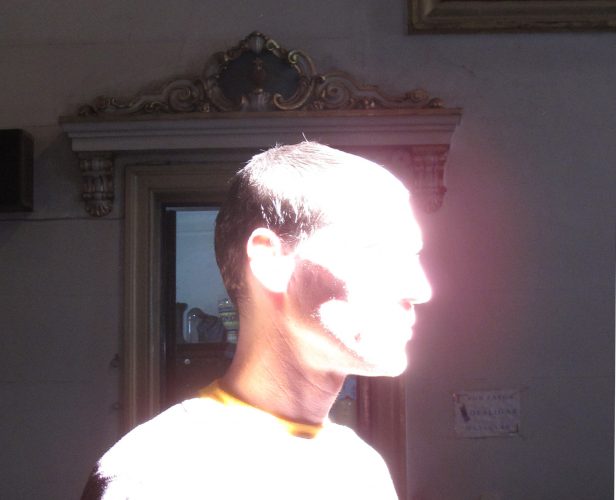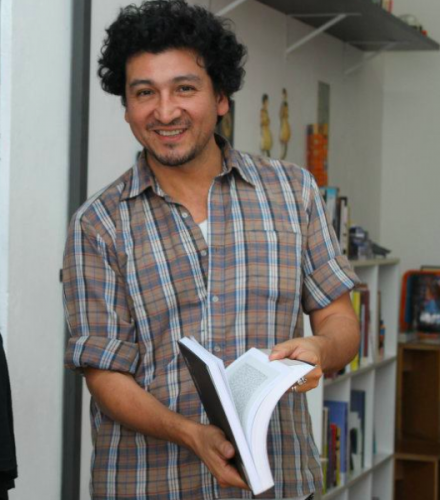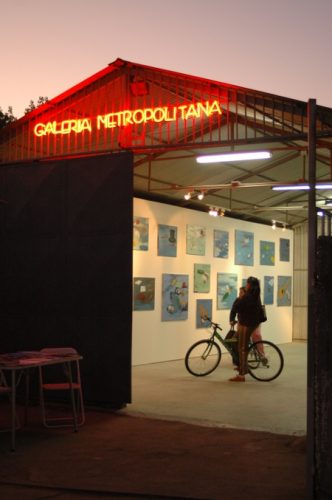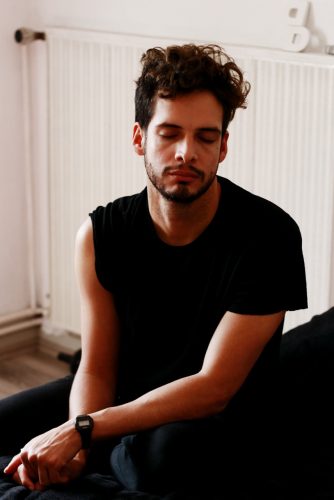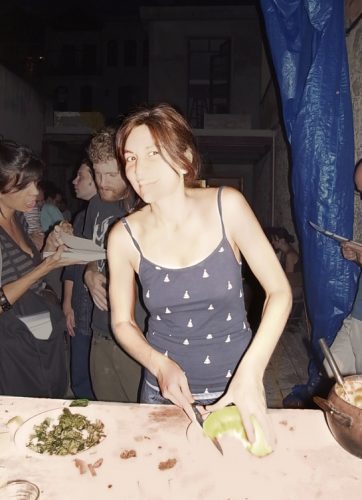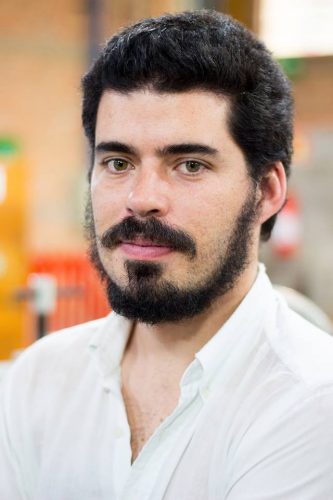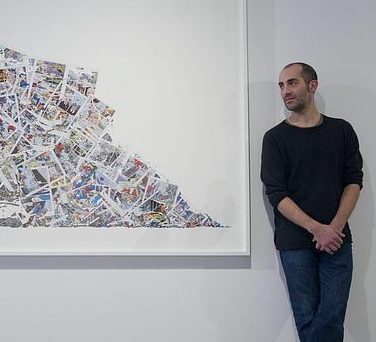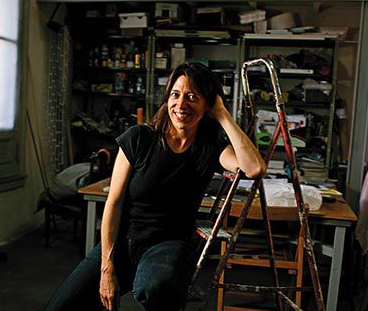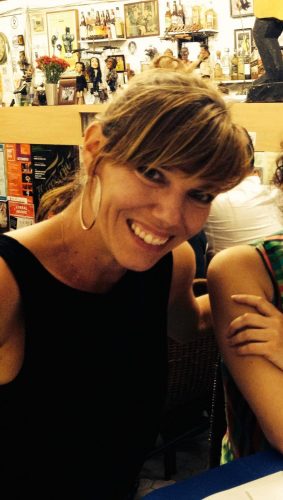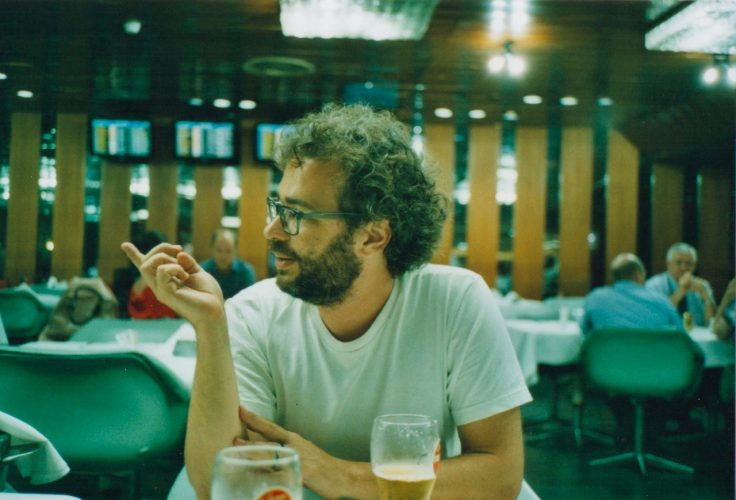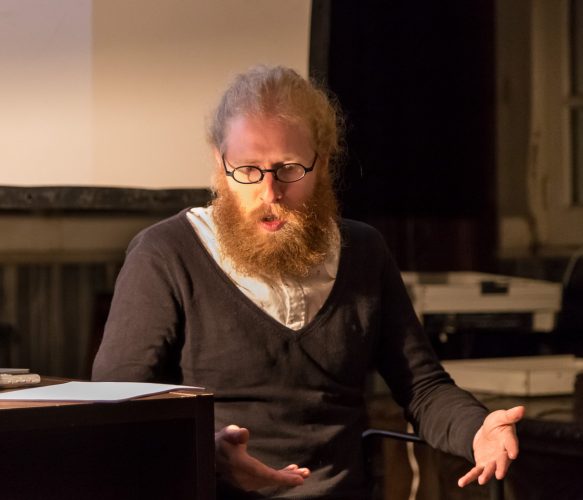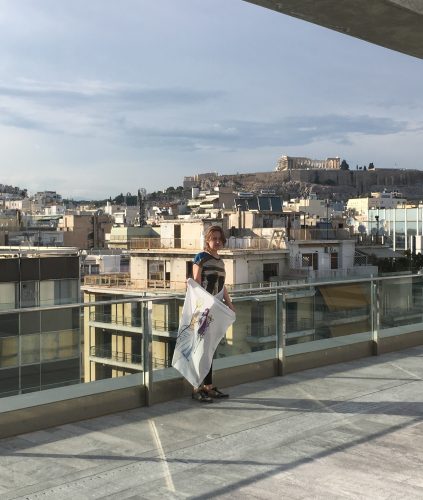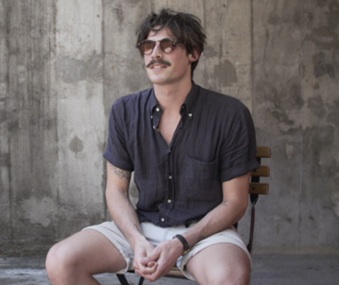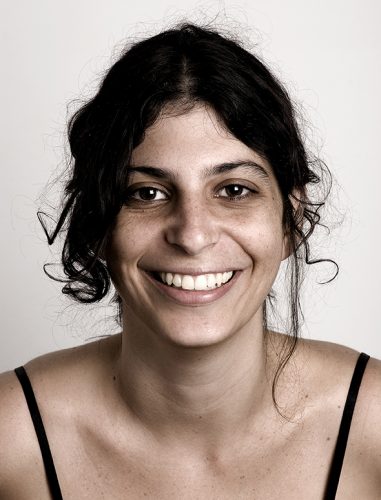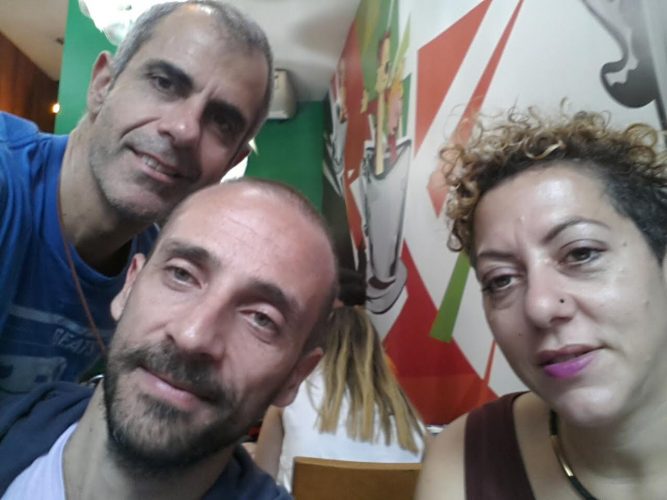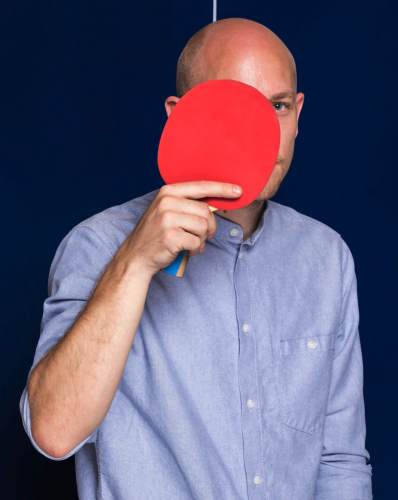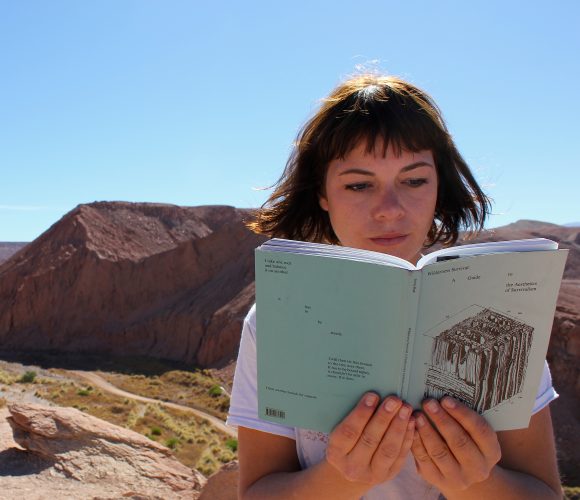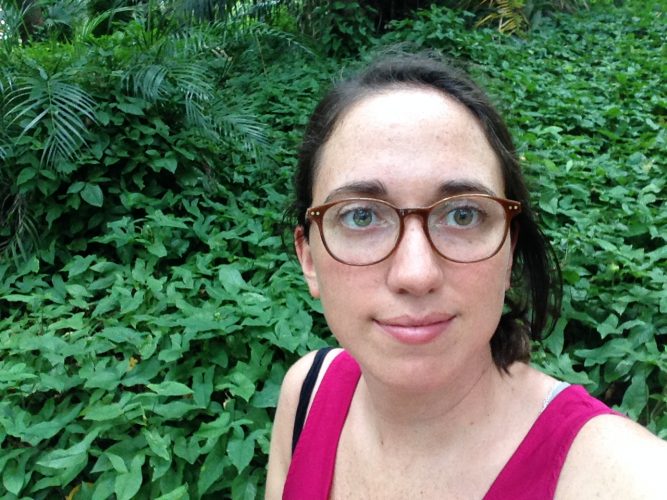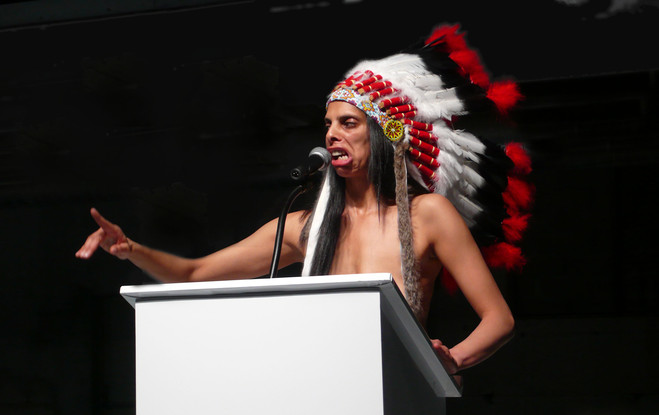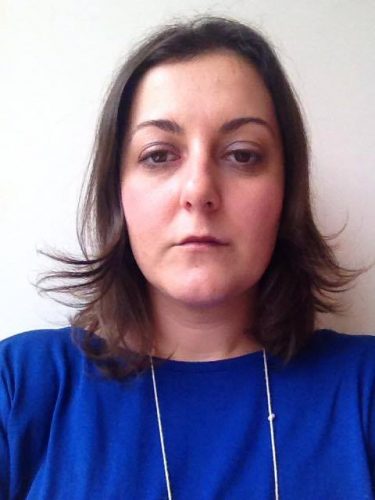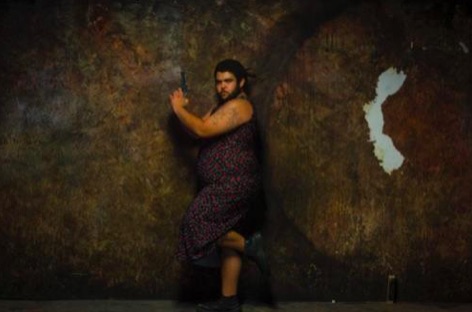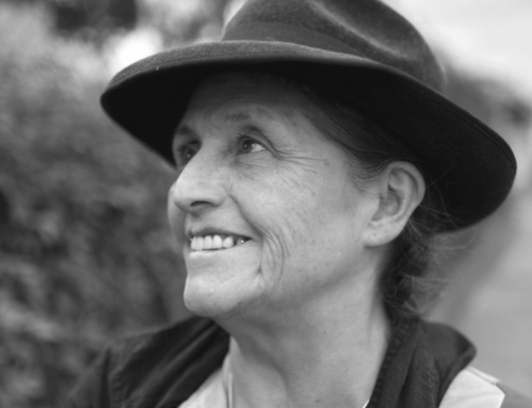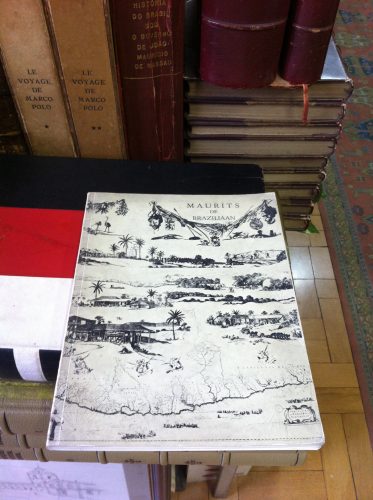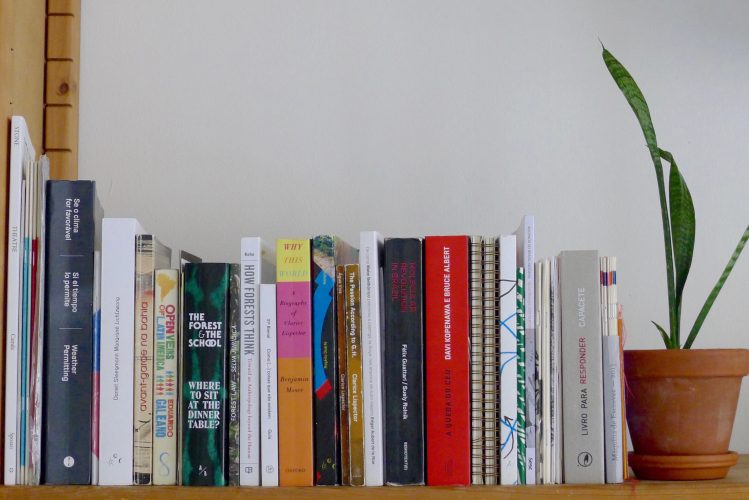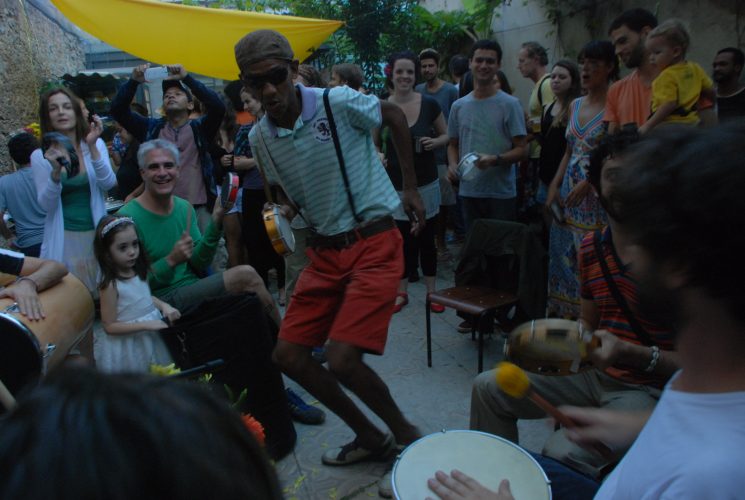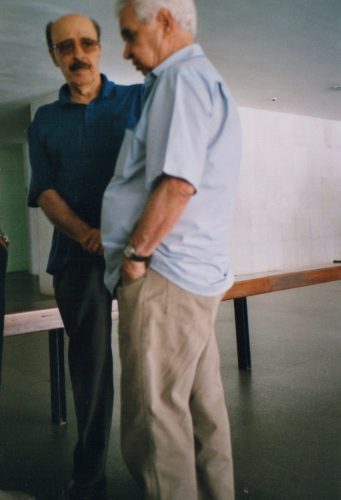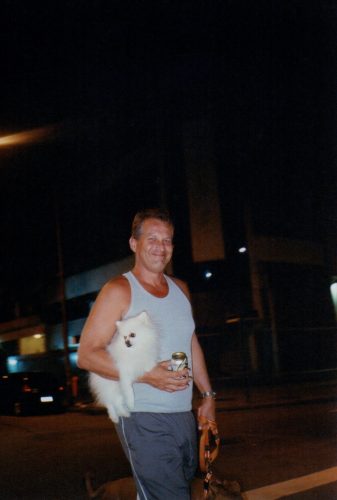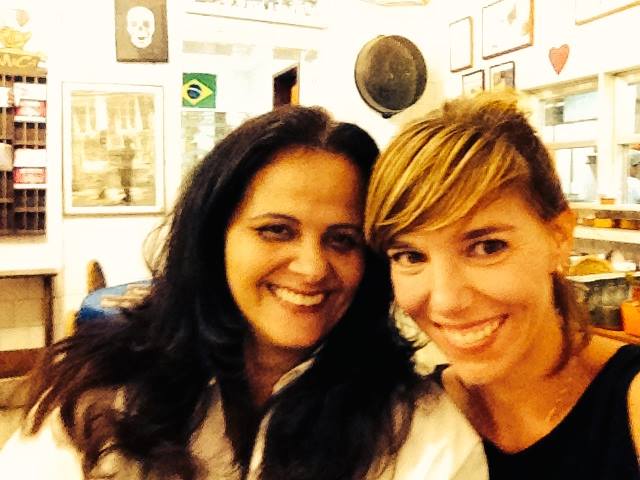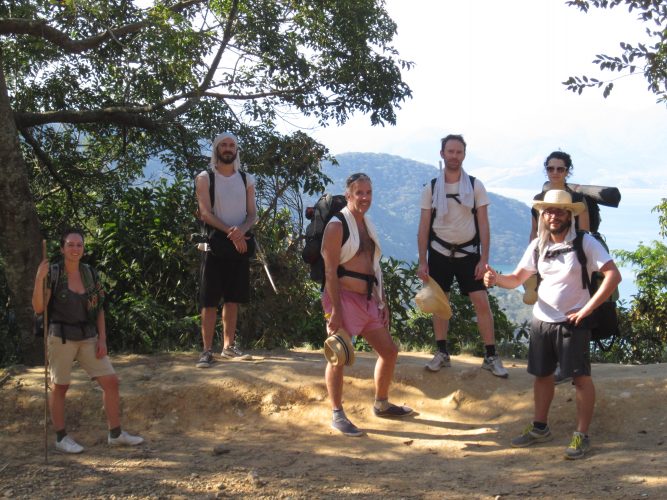Mandinga conceitual realizada, os louros começaram a aparecer. Em função do projeto de um grande amigo, iniciamos a residência com uma experiência de ordem culinária. É necessário dizer que, além da comida, a amizade é um elemento importante para o processo de criação do GIA. Organizou-se na casa o projeto cozinha internacional, no qual todas as quintas-feiras à noite recebíamos grupos de artistas, arquitetos, desocupados necessários, dançarinos amadores e comilões de natureza para saborear quitutes de todo o canto do mundo, além de conversar sobre tudo.
Os jantares eram importantes, pois ressaltavam o conceito de convívio e de estar juntos que pensávamos no contexto da residência, ideia que continuamos levando adiante. Residir, morar, cuidar. Pode parecer estranho para um grupo que tem a rua como suporte de realização dos seus trabalhos de arte, mas esse ponto de vista não tem procedência. Sempre usamos o espaço casa como local de criação, sempre em volta do fogão, com muito samba e amigos e não poderia ser diferente no Rio, pooorra! As ações são para a rua, a lapidação de sua execução: a cozinha.
Será necessário falar, adiante, sobre as ações que estavam sendo realizadas naquele momento – apesar deste pequeno texto desejar tratar do conceito de residência, de um lugar mais aconchegante e afetivo. Sendo assim, nosso processo de absorção foi muito orgânico em relação ao dia a dia de moradores e não de turistas. Foi fundamental o reconhecimento da vizinhança mais próxima, pessoas que já interferiam no dia a dia da cidade, como o entregador de água que produzia vídeos – Fala My Brother -, a feira de orgânicos da frente do prédio que chutava a canela de modelos menos inteligentes de postura alimentar. A identificação que os nordestinos tinham conosco, e assim foi… Coisas da vida, que iam acontecendo num fluxo contínuo… Viva Batatinha! Falando em Batatinha, não precisou andar muito para dar samba. Na mesma praça da feira de orgânicos topamos com uma roda, Sambastião, por causa do padroeiro e da estátua instalada na mesma praça, bendita moqueca!
O GIA, desde sempre, articulou táticas e fazeres multifacetados para dar visibilidade e comunicar – comunicar no seu significado primário, no sentido de tornar comum determinada mensagem, a comunicabilidade antes da comunicação – seus enunciados, construir e partilhar suas narrativas em meio às brechas e fissuras do tecido urbano, de maneira inesperada, atuando nas rotas desviantes do improvável. Dessa maneira, durante os dois meses de residência no QG da Glória, foi possível refletir e discutir sobre o Choque de Ordem que atingia a população da capital carioca naquele momento, e maneiras potentes de criticar seus desdobramentos. O GIA, então, declarou em seu blog:
Podemos destacar a violência que o termo carrega: “choque”. Triste analogia ao cumprimento da ordem via choque elétrico, cada qual que faça sua comparação. Fora do campo da linguagem, a violência continua sendo uma premissa, em vários aspectos, sobretudo contra a população de baixa renda, ou seja a maioria. Os interesses deste choque de ordem são bem explícitos[2].
A conclusão do grupo foi assertiva: Choque dói. Diante dessa constatação, o GIA achou necessário espalhar pela cidade essa mensagem, formulando uma espécie de campanha não oficial. A marca da prefeitura do Rio de Janeiro, então, teve seus elementos alterados – num típico détournement situacionista – e foram produzidos dezenas de adesivos (em uma produção caseira de serigrafia realizada na residência), colados em diferentes locais da cidade. O adesivo laranja se camuflou perfeitamente nas lixeiras cariocas, permanecendo ali como um parasita, disseminando uma contra-informação[3] por tempo indeterminado, em meio à contingência urbana.
Fica claro, então, que grupo desejava se articular no contra-fluxo da imagem consensual que permeia o Rio de Janeiro, cidade maravilhosa: capital do carnaval, das praias, do turismo e do lazer. Percebendo que nem tudo era tão maravilhoso assim, o GIA, passeando pela cidade, também colou em locais específicos adesivos com a mensagem Do not take a Picture (Não fotografe), com intuito de chamar atenção para áreas degradadas e invisibilizadas na capital carioca. As mensagens sinalizavam pontos de tensão, operando desvios e pequenos curtos-circuitos na concepção aparentemente unânime do “Rio de Janeiro Cidade Espetáculo”.
Voltando à residência: já estamos acostumados a experiências de convívio criativo. Aliás, desde o nosso QG do Santo Antônio, em Salvador, a nossa residência na Bahia, a amizade é realmente primordial para a amálgama do grupo. Fator que, de alguma maneira, tornou a residência no Capacete redundante. Não esperávamos – será que alguém esperava? – algo diferente do que já somos: a residência propriamente dita e as intervenções nas ruas como continuidade de nossa vida cotidiana, uma sintonia de nós com a casa e simultaneamente com os espaços heterogêneos que compõem a cidade. O QG da Glória: uma excelente biblioteca, uma vista maravilhosa, ressaltando uma belíssima árvore, que rompe com a gravidade e nos olha no fundo dos olhos, se coloca na mesma altura de nossos seis andares. A cozinha dispensa apresentações. O resto não importa, mas sem dúvida merece elogios. Impossível dizer quantas pessoas passaram por lá − o mesmo pode-se dizer do QG da Bahia. Sendo assim a mais crua realidade é melhor dizer: estávamos em casa.
[1] O QG – Quartel General- é um espaço de encontro, pensamento e ação, trabalho que já foi realizado pelo GIA em diversos lugares. O trabalho consiste na produção de um espaço temporário no qual os artistas convivem com o público, propondo instantes de partilha e convívio – através de refeições compartilhadas, troca de ideias, disponibilização do acervo do grupo, festas, rodas de samba – sendo que muitas ações e intervenções surgem desses potentes momentos de convívio. Dessa maneira, a participação do público é de fundamental importância para a realização do QG, que assume diferentes configurações a depender do lugar onde se desenvolva: plantas, instrumentos musicais, lona amarela, comida e afeto são alguns dos elementos que compõem o QG do GIA.
[2] Disponível em: http://giabahia.blogspot.com.br/
[3] Para o artista visual Cildo Meireles, uma contra-informação é aquela que circula por circuitos alternativos, descentralizados, que se opõem às mensagens veiculadas pelas mídias oficiais, como televisão, rádio, jornais, etc.
-




 Dorota Gawęda
Dorota Gawęda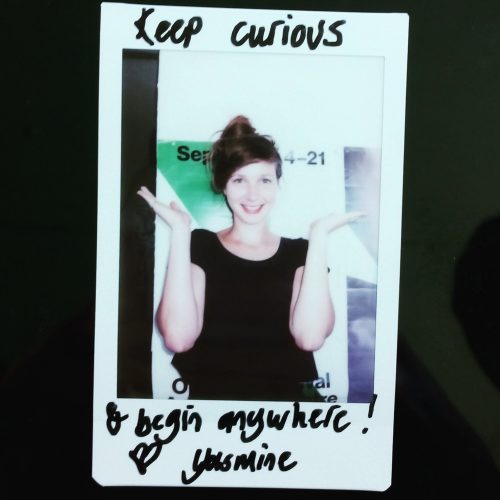
 Tatyana Zambrano
Tatyana Zambrano





